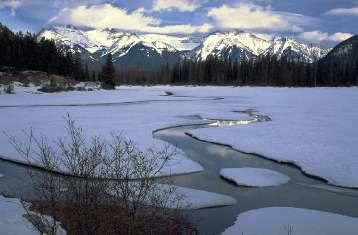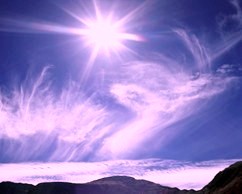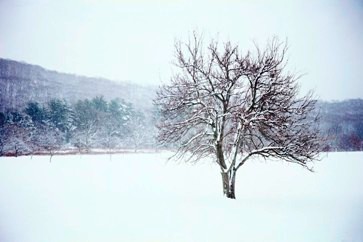|
Celebrate the Dawn of a New Cycle on the Wheel of the Year with the Winter Solstice and Imbolc
Winter is a time of hibernation and stillness. Blanketed by the snow, the earth goes into a dormant stage, a resting period for plants and animals and other living creatures that burrow underground or nest for the winter. Metabolisms slow and energy is stored and saved rather than expended. The days become shorter and colder as the sun wanes in the sky. The world outside is silent and bereft of birdsong, and life appears to come to a standstill. Nature seems lifeless and dead – yet beneath the surface, life goes on unseen, waiting and preparing to come forth. The two winter holidays on the Wheel of the Year include the Winter Solstice and Imbolc. Winter Solstice/Yule: Celebrated around December 21st. The winter solstice is the shortest day of the year, and the longest night. Yule is a solar festival associated with the solstice. The Winter Solstice (“sun standstill in winter”) is a celebration of the revival of the ebbing sun, the time when it ceases its descent across the horizon. At the solstice, the cycle reverses and the sun begins its ascent in the sky once again, heralding a change in seasons when the days gradually become longer. Yule has associations with Christmas; its origins are in fact derived from this ancient pagan holiday. Yuletide is from December 20th to December 31st and refers to what is known as the “12 days of Christmas”. It is a festival that has been celebrated for centuries in many different cultures throughout Europe and the rest of the world, from the Celts to the Norwegians, the Scandinavians and the Romans to the Hopi Indians of North America. Early rituals were performed to speed the return of summer and to bring about a time when food would be more readily available. The theme of Yule and the Winter Solstice is one of rebirth, a time of the old turning into the new, and the renewal of the sun. In Neopaganism, it is the time when the Goddess gives birth to the Sun God who is reborn from the underworld. Yule is celebrated with the burning of Yule logs, the lighting of candles, often bayberry or pine, and the hanging of holly, mistletoe and ivy wreaths, branches and boughs. Fir or spruce trees are decorated in green and red and a myriad of colors, along with the traditional exchanging of gifts. All manner of cookies and breads, sweets and cakes are enjoyed, along with eggnog, mulled wine and beer. Like the other wheel of the year festivals, traditions vary widely around the world as to how the holiday is celebrated, with a multitude of variations.
Imbolc/Candlemas: February 2nd – The first of the springtime festivals, Imbolc is a festival of light and a celebration to welcome the first stirrings of spring and the lengthening of days. It is a cross quarter day halfway between the winter solstice and the spring equinox. The word Imbolc (pronounced im’-olk) is a Gaelic word that means “in the belly”.
The theme of Imbolc is one of initiation, purification, and preparation. Just like the earth is pregnant with life energy unseen to the naked eye, Imbolc celebrates a time of becoming and the invisible process of manifestation. It is a period of inner awakening, and preparation for new life; a clearing away of the old to make way for the new, for what is to come, for the spring, and for what is yet to be born. In Neopaganism, Imbolc is the reawakening of the Earth Goddess by the Sun God’s increased energy. It is also the impregnation of the goddess by the god, and symbolizes the descent of spirit into matter. Decorations for Inbolc include a crown of candles, often lavender and white, corn dollies, seeds and the lighting of candles and fires. Historically, it is an Irish/Celtic/Gaelic festival dedicated to the goddess Brigid. It occurred around the time of year when the ewes would be lactating in preparation for the springtime birth of newborn lambs. In later times, it came to be associated with the Christian holiday of Candlemas, also known as the feast of the purification of the Virgin Mary. Candlemas is also associated with the Roman festival of Lupercalia, which was a festival of light held on February 15th.
Click here to return from Winter Solstice to Seasons of the Year
|








